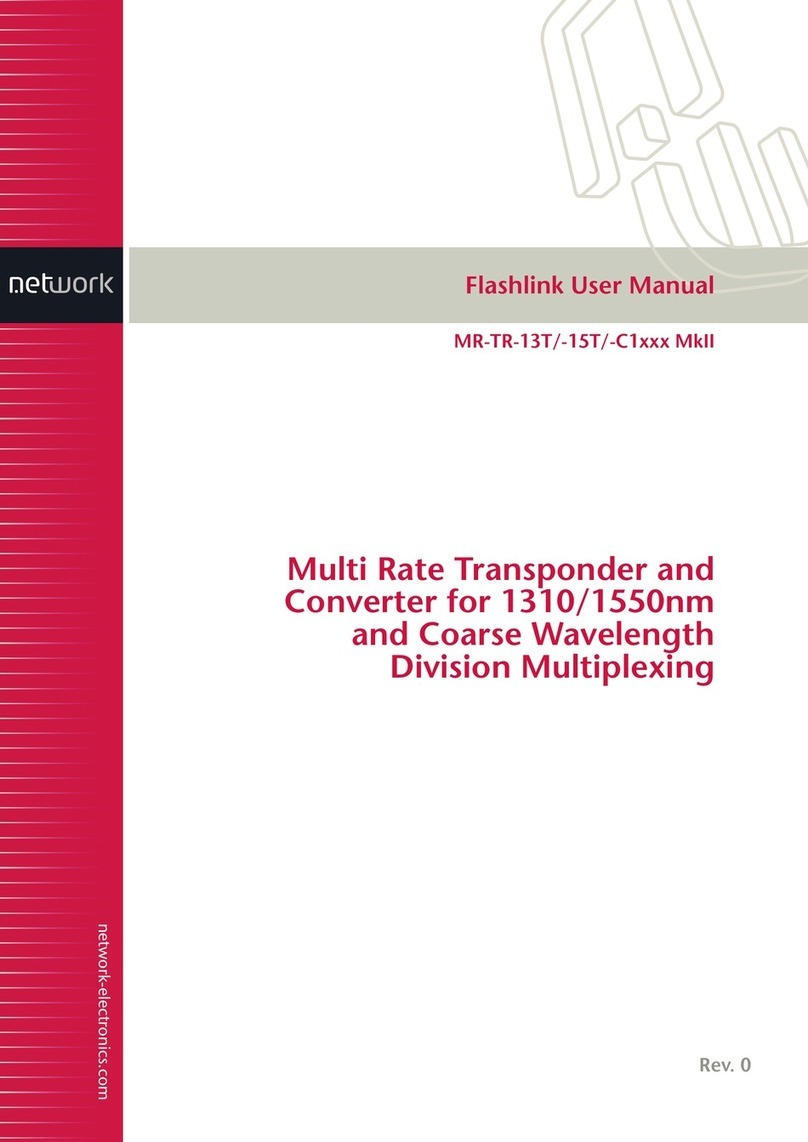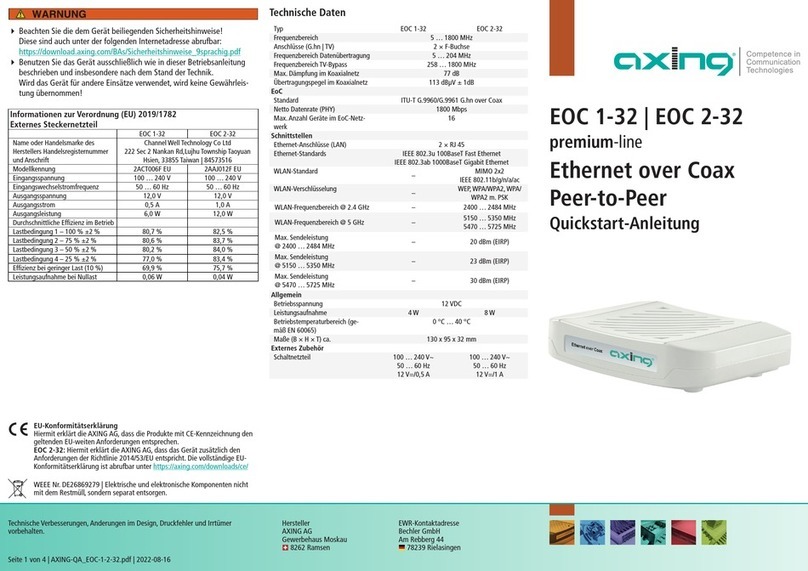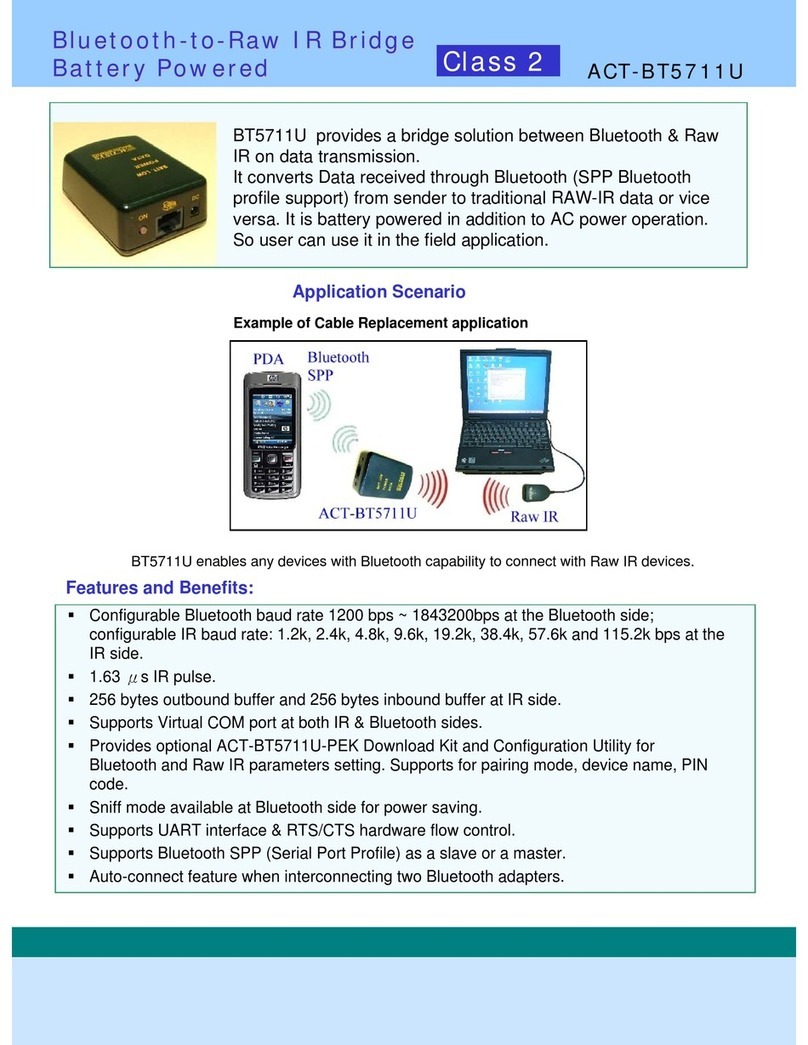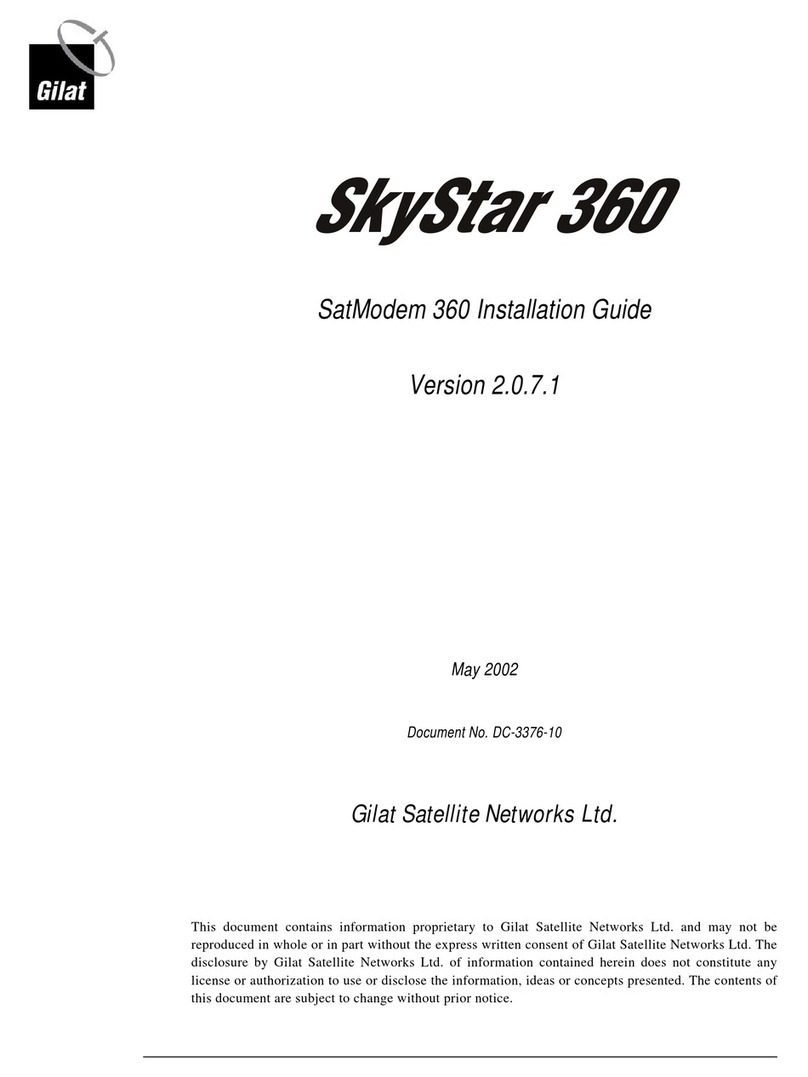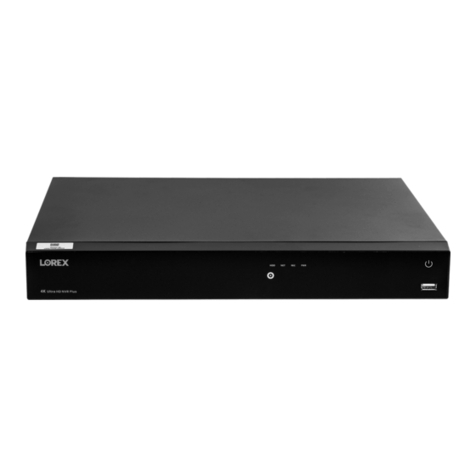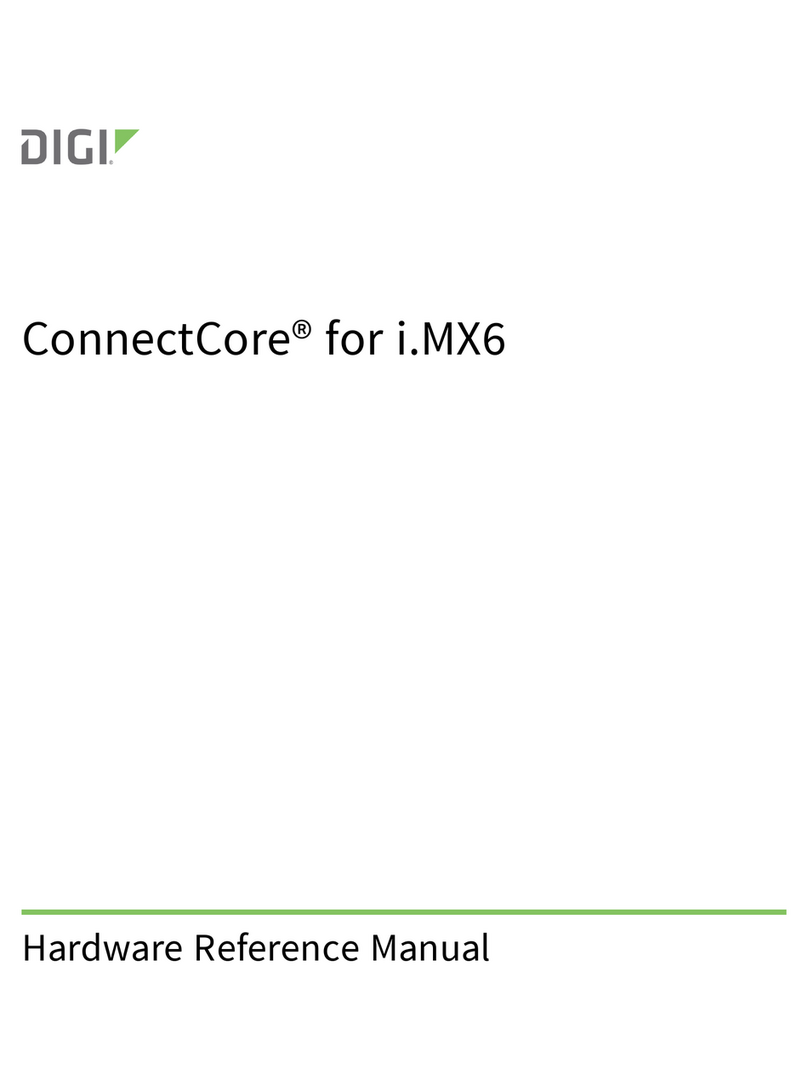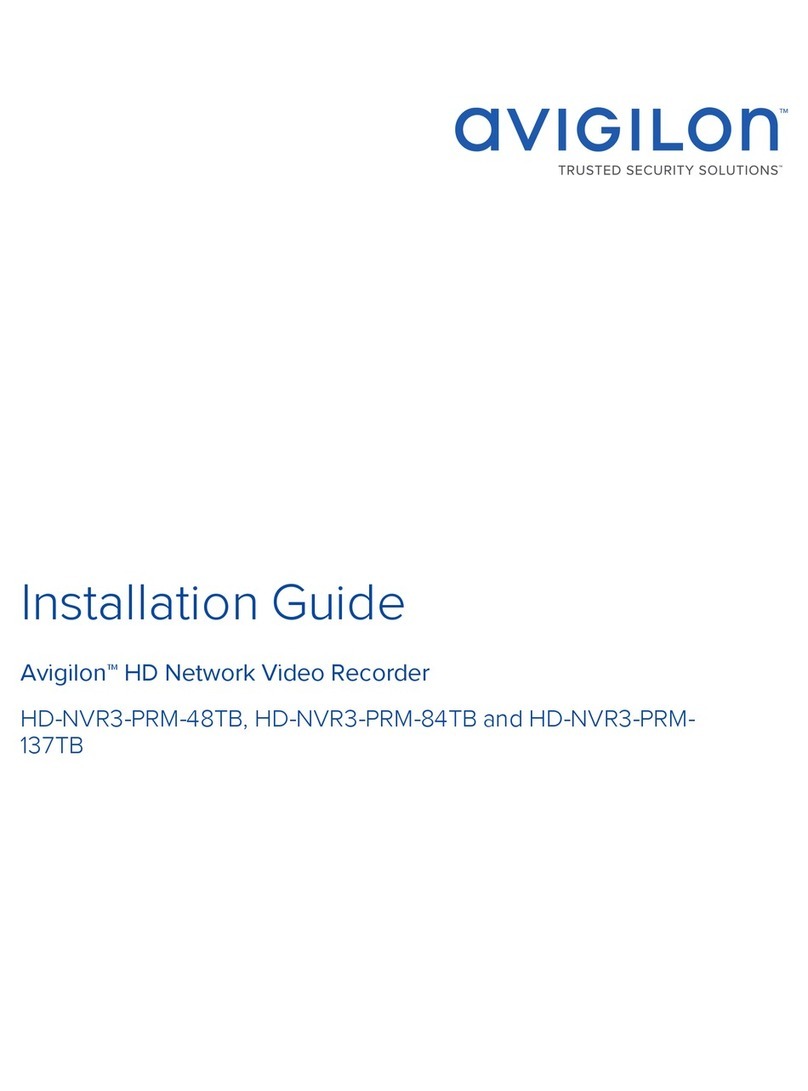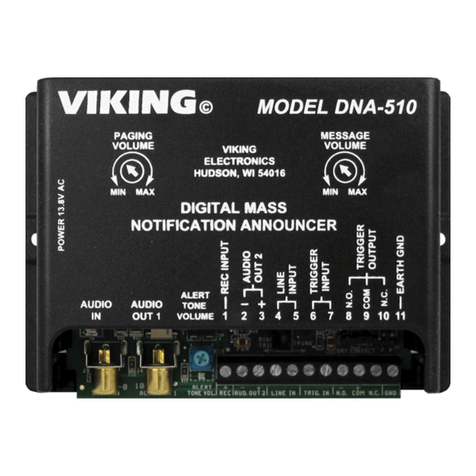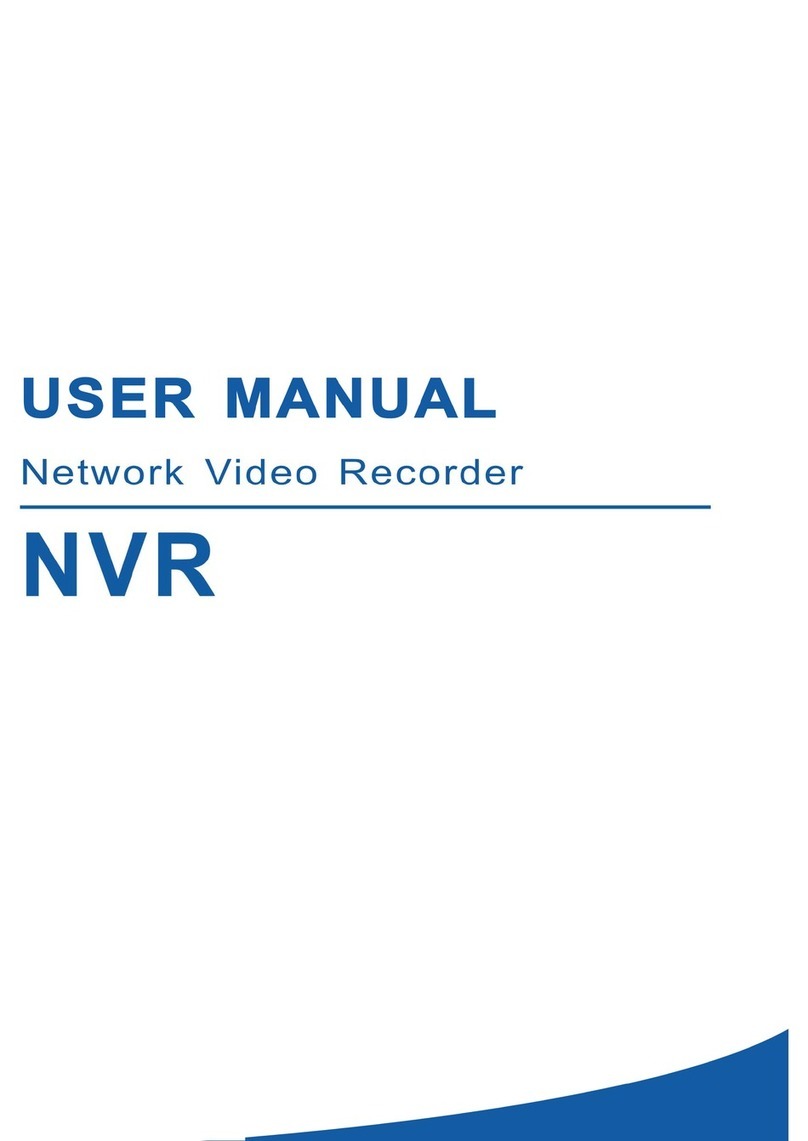RoboteQ STO User manual

STO MANUAL
11.06.2020 roboteq sto manual_13.docx 1 of 9
STO circuit manual
Hardware STO implementation in
RoboteQ motor controllers
Revision: 13

STO MANUAL
11.06.2020 roboteq sto manual_13.docx 2 of 9
Table of contents
1. Revisions of this document: ...........................................................................................................3
2. Release table:...................................................................................Error! Bookmark not defined.
3. Company Information: .....................................................................Error! Bookmark not defined.
4. Scope..............................................................................................................................................4
5. Motor controllers ...........................................................................................................................4
6. Safe Torque Off (STO).....................................................................................................................4
7. Safe Torque Off (STO) on Roboteq Controllers...............................................................................4
8. Activating STO ................................................................................................................................5
9. Deactivating STO ............................................................................................................................5
10. Constraints when using STO .......................................................................................................5
11. FAILURE MESSAGES....................................................................................................................5
12. STO Firmware implementation ..................................................................................................6
13. Mosfet Failure Detection Firmware implementation .................................................................6
14. STO Commands ..........................................................................................................................6
STO –STO enabled .............................................................................................................................6
STT –STO Self-Test.............................................................................................................................7
STT –STO Self-Test Result ..................................................................................................................7
15. Installation –Maintenance.........................................................................................................8
STO Installation test ...........................................................................................................................8
Mosfet Fail detection test (optional)..................................................................................................8
16. STO Voltage source specification attention................................................................................9
17. Compliance and Safety Metrics ..................................................................................................9
18. Technical Data ............................................................................................................................9

STO MANUAL
11.06.2020 roboteq sto manual_13.docx 3 of 9
1. Revisions of this document:
Revision
Author
Date
Description
01
Kostas Andriotis
02.04.2019
First draft
02
Kostas Andriotis
03.04.2019
Added CH 14, minor
changes
03
Kostas Andriotis
04.04.2019
Added !STT command,
Added STO levels
Minor changes
04
Kostas Andriotis
22.04.2019
Added Constraints
when using STO
section, minor
changes
05
Kostas Andriotis
30.04.2019
Added missing info
from FMEDA
06
Kostas Andriotis
07.05.2019
Added release table.
Minor changes
07
Kostas Andriotis
09.05.2019
Changes after
requirements from
auditor
08
Kostas Andriotis
29.11.2019
Added mosfail
detection test
09
Kostas Andriotis
06.12.2019
Minor fixes
10
Kostas Andriotis
13.12.2019
Added attention
notice for latest
firmware to use
11
Kostas Andriotis
17.02.2020
Shorted Mosfets test
added
12
Kostas Andriotis
01.06.2020
Shorted Mosfets
maintenance test
added
13
Kostas Andriotis
11.06.2020
Fixed shorted mosfet
test sequence.
Deleted release table
and company
information

STO MANUAL
11.06.2020 roboteq sto manual_13.docx 4 of 9
2. Scope
This STO manual is the original instruction about the STO circuitry that is implemented in RoboteQ’s
motor controllers. Describes how the implemented circuit works and how the signals are
processed/tested by MCU. Also includes maintenance instructions and commands along with the all
the technical data for RoboteQ’s STO implementation.
3. Motor controllers
The STO function will be integrated in RoboteQ’s motor controllers with STO hardware
implementation.
ATTENTION
STO firmware implementation is supported with firmware v2.0 or later. End user need to update to
the latest available version. It is also recommended to use the latest version of Roborun+ utility. Please
check www.roboteq.com for updates.
4. Safe Torque Off (STO)
Safe Torque Off is a safe method for switching controller in a state where no torque is generated,
regardless whether the controller is operating normally or is faulty. This function is a mechanism that
prevents the drive from restarting unexpectedly. STO has the immediate effect that the drive cannot
supply any torque-generating energy. STO can be used wherever the drive will be brought to a
standstill in a sufficiently short time by the load torque or friction or where coasting down of the drive
is not relevant to safety. STO enables safe working and has a wide range of use in motion control/
systems with moving axes. The advantage of the integrated STO safety function compared with
standard safety technology using electromechanical switchgear is the elimination of separate
components and the effort that would be required to wire and service them. Because of the rapid
electronic switching times, the function has a shorter switching time than the electromechanical
components in a conventional solution.
WARNING
Activating STO does lead to no more torque generation on the motor. The motor will not be actively
stopped but run out. It might be possible that the load is turning the motor (e.g. hanging axis). If this
can lead to hazards further measures need to be taken (e.g. break). In case of a multiple fault in the
power stage a rotation might occur.
5. Safe Torque Off (STO) on Roboteq Controllers
Two digital inputs on the user I/O connector can be used to put the controller in a state where the
motor is deprived of energy.
The two inputs, labeled STO1 and STO2 must both be brought and maintained at a logic level 1 for the
controller to be active. If any one or both of these lines are at 0, the output is de-energized.
The STO circuit operates independently of the MCU. It will always override the MCU, whether the MCU
is processing normally, or is in a hardware of firmware fault condition.
The STO circuit works by controlling the voltage supply to the controller’s output MOSFET drivers.
When both STO1 and STO2 are at logic 1 level, MOSFET drivers are supplied with power. When either

STO MANUAL
11.06.2020 roboteq sto manual_13.docx 5 of 9
or both STO1 and STO2 are at logic level 0, the MOSFET driver power is cut, and the MOFETs gates can
no longer be above the ON threshold level, regardless of the MCU activity.
Accordingly, the STO circuit is built with redundancy and will continue to function if any one
component is faulty, anywhere in the STO circuit or elsewhere in the controller.
6. Activating STO
By factory default STO is disabled. It must be enabled by removing the jumper located on the
controller’s PCB (depends on model –check datasheet). STO is activated by removing power (logic
level 0) to both STO inputs. In order for controller to monitor STO state, this function must be activated
through Roborun+ Utility or serial command (check command section). The controller will immediately
stop generation of torque in the motor. Hardware STO functionality is only available in the T version
of the controller.
7. Deactivating STO
STO is deactivated by applying a voltage (logic level 1) to both STO inputs. After this, a new start/motor
command has to be given to turn the motor. It can be disabled by connecting the jumper located on
the controller’s PCB. After that, user should disable the function through Roborun+ Utility or serial
command (check command section).
8. Constraints when using STO
All voltages attached to the controller need to fulfil SELV or PELV requirements.
After first installation and at least every 3 months the tests as described in this manual have
to be conducted.
9. FAILURE MESSAGES
In case a failure is detected in the STO implementation the following failure message will be visible
according on how the user operates the controller.
1- Status LED on Controller
The status LED pattern will be the below in case of STO failure
2- STO Fault LED at Roborun+ utility in failure
This failure can have several internal and external reasons. If the failure is shown, please check the
cabling and the signals to STO 1 and STO 2. Both signals much have at all times the same level.
Check that the STO jumper is set correctly and STO is configured correctly
Check wiring
Check cabling for short circuits or open circuits
3- Mosfail LED at Roborun+ utility in Mosfet failure

STO MANUAL
11.06.2020 roboteq sto manual_13.docx 6 of 9
If the failure persists, contact Roboteq support.
WARNING
Same status LED pattern is used for undervoltage and overvoltage faults and that should not be
confusing. If STO fault appear it is normal for the controller voltage to be off and undervoltage fault to
trigger. Either way this Status LED pattern indicates a situation that should be treated with caution.
10. STO Firmware implementation
The STO circuit will operate regardless of the MCU activity. However, when operating normally the
MCU will perform the following functions:
1. Self-test that the STO circuits and switches are functional. This is done every time the controller
is powered on. It can also be done at any time during the controller from external user
commands from the system’s PC or PLC (check command section). The self-test can also be
initiated by the controller itself using its scripting language, at periodic time intervals, or any
other user-define rule(s).
If the self-test fails, the controller will stop driving the MOSFETs and set a fault flag that can be
monitored by the PLC/Computer. It can also activate one of its digital outputs to indicate the
fault.
2. The STO inputs are monitored continuously every 1ms. If one or both STO inputs are at level
zero and the MOSFET driver supply voltage has not dropped, an STO fault is detected. The STO
fault flag is set. A user digital output can be activated to indicate the fault.
11. Mosfet Failure Detection Firmware implementation
In order to support STO in RoboteQ brushed motor controllers Mosfet failure detection mechanism is
implemented. This way the MCU at every startup will trigger and test each of the Mosfets on the output
circuit and identify if they are operating normal or they are shorted. This test is applicable for all
RoboteQ controllers that have firmware v2.0 or later. In case of fault/shorted Mosfet, fault is indicated.
ATTENTION
Mosfet Failure test is performed during boot of the controller (< 1sec) and before any power output
to Mosfet. This way, if error occurs controller protect the system and stop operation fast enough so
that no further damaged happens.
12. STO Commands
STO –STO enabled
Description:
Configure this parameter in order to enable the STO functionality.
Syntax Serial: ^STO nn
~STO
Syntax Scripting: setconfig(_STO, nn)
Number of Arguments: 1

STO MANUAL
11.06.2020 roboteq sto manual_13.docx 7 of 9
Argument 1: STO Status
Type: Unsigned 8-bit
Min: 0 Max: 1
Default: 0
Where:
nn = STO status
0: Disabled.
1: Enabled.
Example:
^STO 1: Enable STO functionality.
STT –STO Self-Test
Description:
With this command the STO Self-Test/Mosfet failure test process is executed in order to check whether
there is a fault. This process is applicable only on motor controllers with latest firmware v2.x installed.
The result of the test is returned automatically. In case of fault the Respective STO Fault bit in the Fault
Flags is set. The fault is triggered when:
Any of the transistors or other component of the STO circuit is damaged.
The respective jumper is placed on the board.
Only one of the two STO input is set to high.
Any of the power Mosfets is shorted
Syntax Serial: !STT
Syntax Scripting: setcommand(_STT, 1)
Number of Arguments: 0
STT –STO Self-Test Result
Description:
Returns the status of STO or the result of the latest executed STO Self-Test process after !STT
command. This process is applicable only on motor controllers with latest firmware v2.x installed.
Syntax Serial: ?STT
Argument: None
Syntax Scripting: result = getvalue(_STT, cc)
Where:
cc =
1: STO state
Reply:
STT=ff Type Unsigned 8-bit Min: -1 Max: 5
2: Mosfet fail
Reply:
STT = f1 + f2*2 + f3*4 + ... + fn*2^n-1 Type: Signed 32-bit Min: 0 Max: 65535

STO MANUAL
11.06.2020 roboteq sto manual_13.docx 8 of 9
Where ff=
-1: The test is in process or not applicable
0: Test successful
1: STO1 failed the test
2: STO2 failed the test
3: Test failed using input values
4: Test passed using input values, but cannot continue test since STO is triggered.
5: Mosfet failure
And:
f1 = U1 top fault
f2 = U1 bottom fault
f3 = V1 top fault
f4 = V1 bottom fault
f5 = W1 top fault
f6 = W1 bottom fault
f7 = U2 top fault
f8 = U2 bottom fault
f9 = V2 top fault
f10 = V2 bottom fault
f11 = W2 top fault
f12 = W2 bottom fault
13. Installation –Maintenance
STO Installation test
The STO circuit needs to be tested before first installation and at least every 3 months according to the
below sequence:
1. Activate STO (both logic level 0)
2. Check that STO is active (through Roborun+ Utility/Serial)
3. Check that there is no STO fault present (through Roborun+ Utility/Serial)
4. Deactivate STO 1 and STO 2 (both logic level 1)
5. Check that STO is not active and that there is no STO fault present (through Roborun+
Utility/Serial).
Mosfet Fail detection test (optional)
This test can be performed to validate mosfet detection proper operation:
1. Check that ~ZSRM value is a positive number (through Roborun+ utility/Serial)
2. Power off controller
3. Short U phase and GND and boot controller
4. Check that error is correctly detected according to STT result
5. Remove short and reboot controller
6. Check that no error is detected
7. Repeat steps 2-5 with all phases and shorting also to Vmot. Each time, check for the correct
error detection reading
Controller should be restarted at least once per 3 months to test the Mosfet fail detection.

STO MANUAL
11.06.2020 roboteq sto manual_13.docx 9 of 9
SAFETY INSTALLATION
It is required that the controller has to be placed in an enclosure that can provide IP54 protection.
SAFETY REGISTRATION
It is required that STO end user should follow up www.roboteq.com and register to site/forum for any
news about safety function.
14. STO Voltage source specification attention
In order to have maximum response at STO implementation, user/installer/integrator should use
voltage source with low output capacitance. In any other case, latency in activation might occur.
15. Compliance and Safety Metrics
The STO function is compliant to:
IEC 61800-5-2:2007, SIL 3
IEC 61508:2010, SIL 3
IEC 62061:2005, SIL 3
ISO 13849-1:2015, Category 3 Performance Level e
Metric acc. To IEC 61508, IEC 61800-5-2, IEC
62061
Value
SIL
Up to 3
PFH
5 FIT
Mission Time and Proof Test Interval
20 years
Performance Level
e
Category
3
MTTFD
>100 years
16. Technical Data
Specification
Value
STO Input High Level
6V to 30V
STO Input Low Level
0V to 1V
STO Response Time
< 5msec
Operating Temperature
-20°C to 55°C
Storage Temperature
-20°C to 70°C
IP degree
IP40
Humidity
5% to 95% non-condensing
Maximum altitude
2000m
STO cable length
≤ 3m (1)
EMC immunity
According to IEC 61800-3:2017 and IEC 61800-
5-2:2007 Annex E
CE Declaration of conformity
Available at www.roboteq.com
(1) All connected cables must have length <3m
Table of contents
Popular Network Hardware manuals by other brands
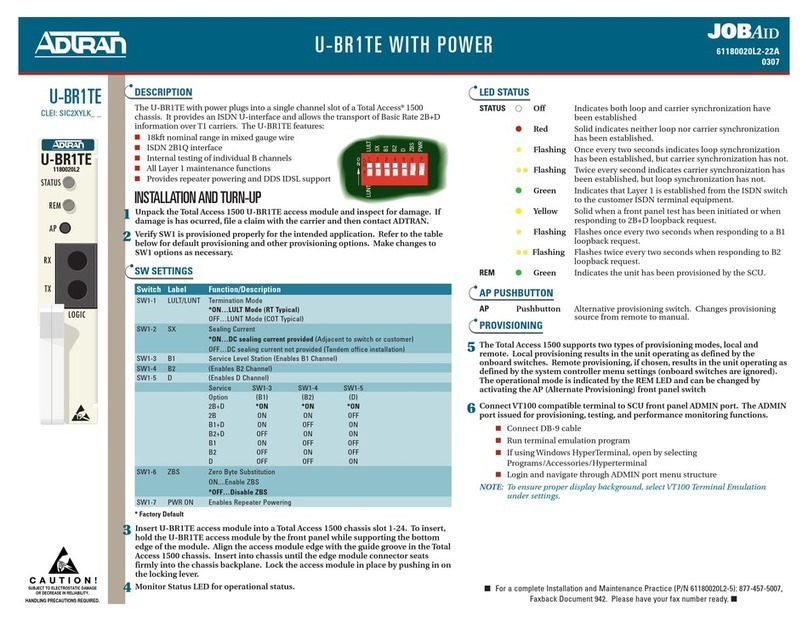
ADTRAN
ADTRAN U-BR1TE quick start guide
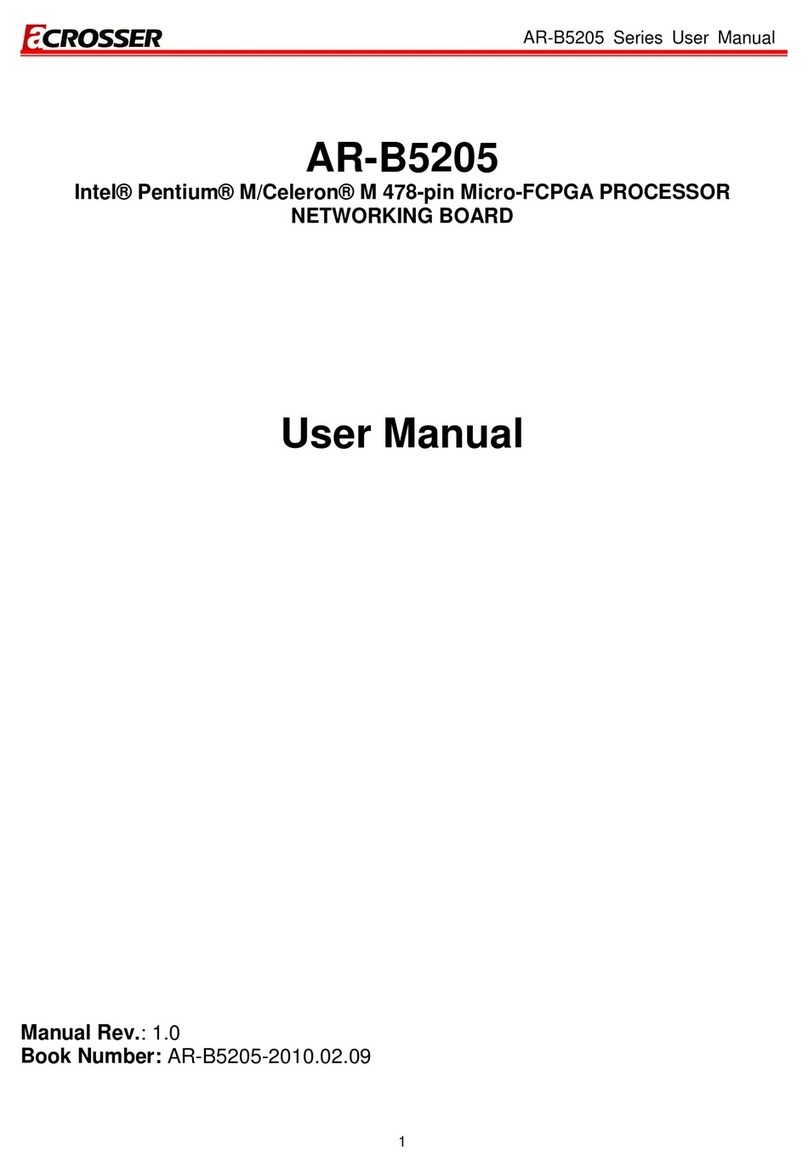
Acrosser Technology
Acrosser Technology AR-B5205 Series user manual
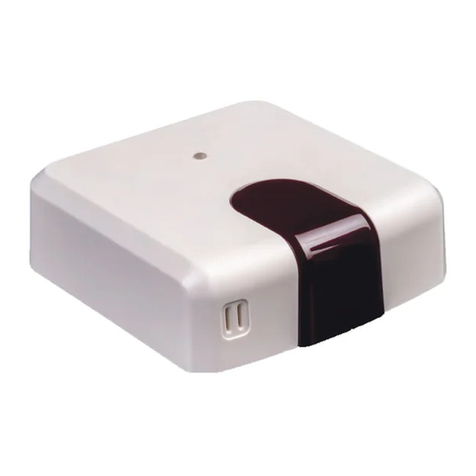
Fujitsu
Fujitsu anywAiR Quick installation guide
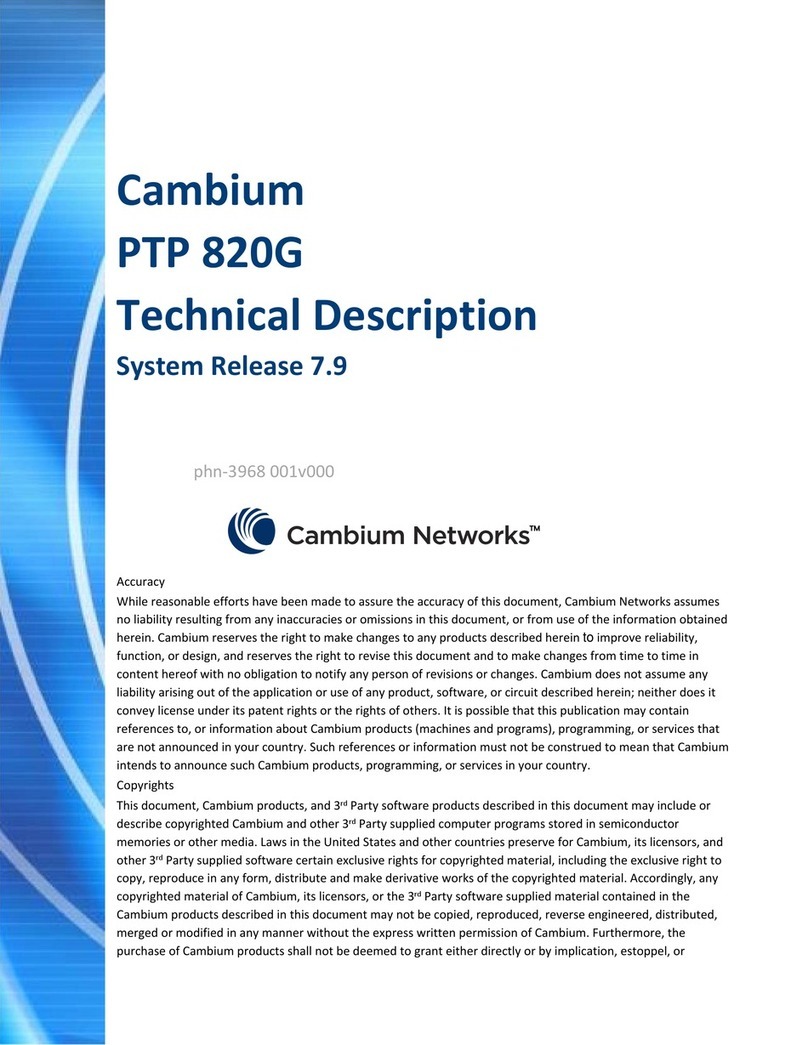
Cambium Networks
Cambium Networks PTP 820G Technical description
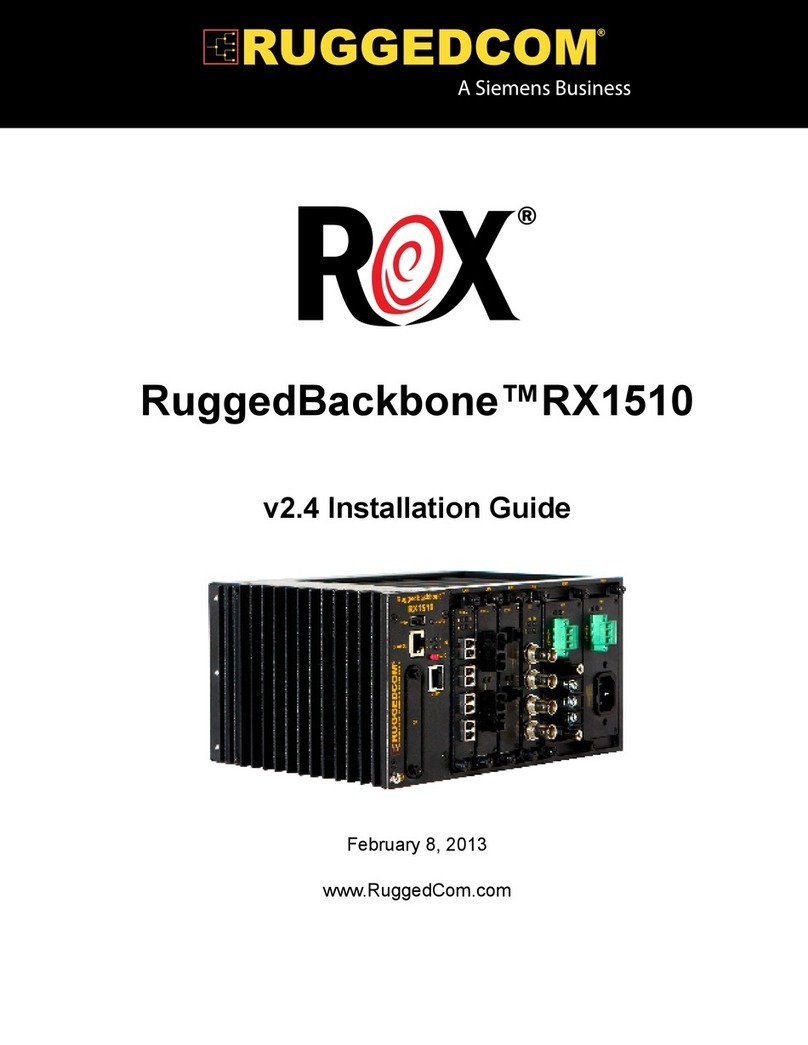
RuggedCom
RuggedCom RUGGEDBACKBONE RX1510 installation guide

Funlux
Funlux ZP-NE14-S manual
